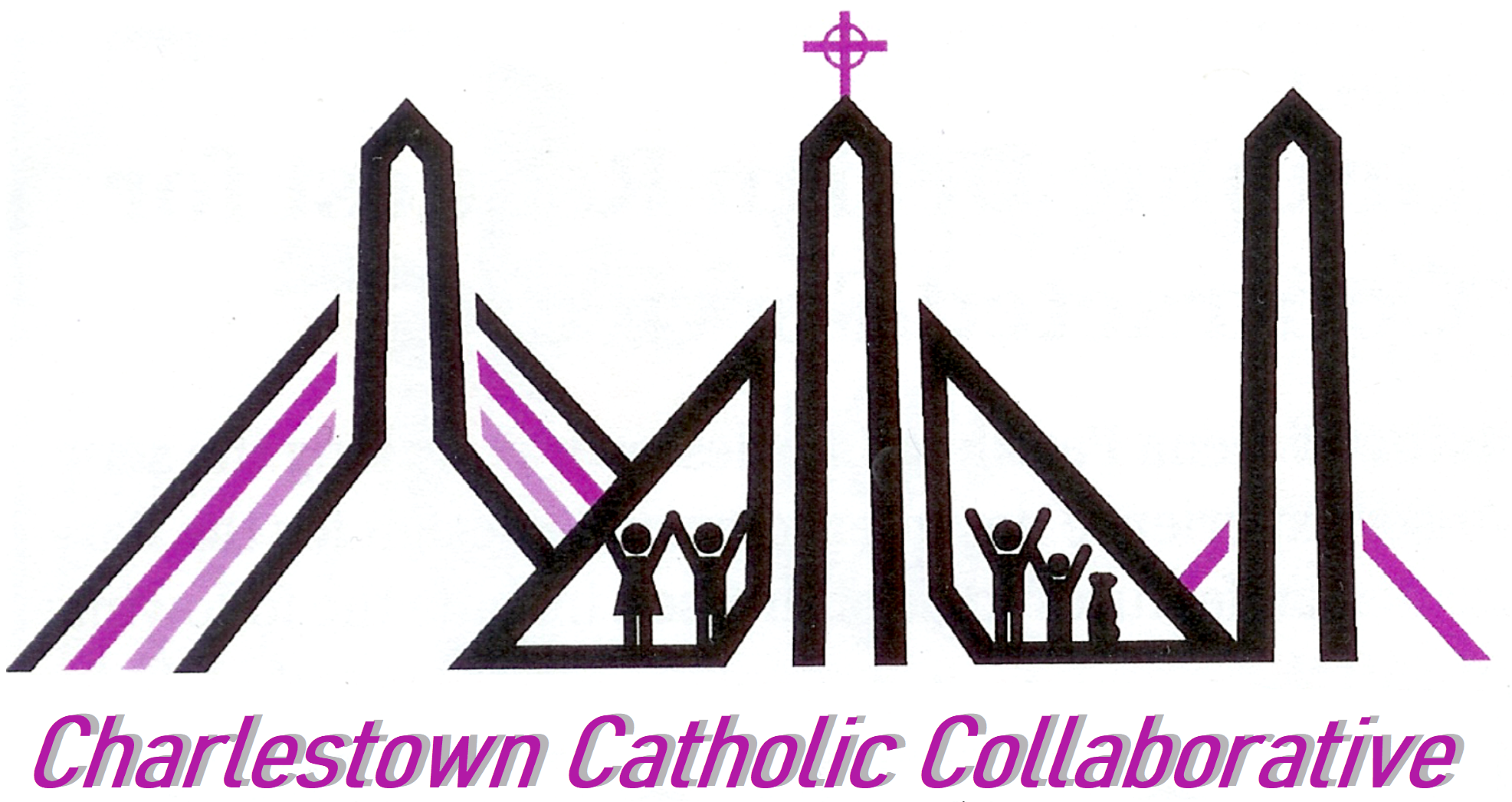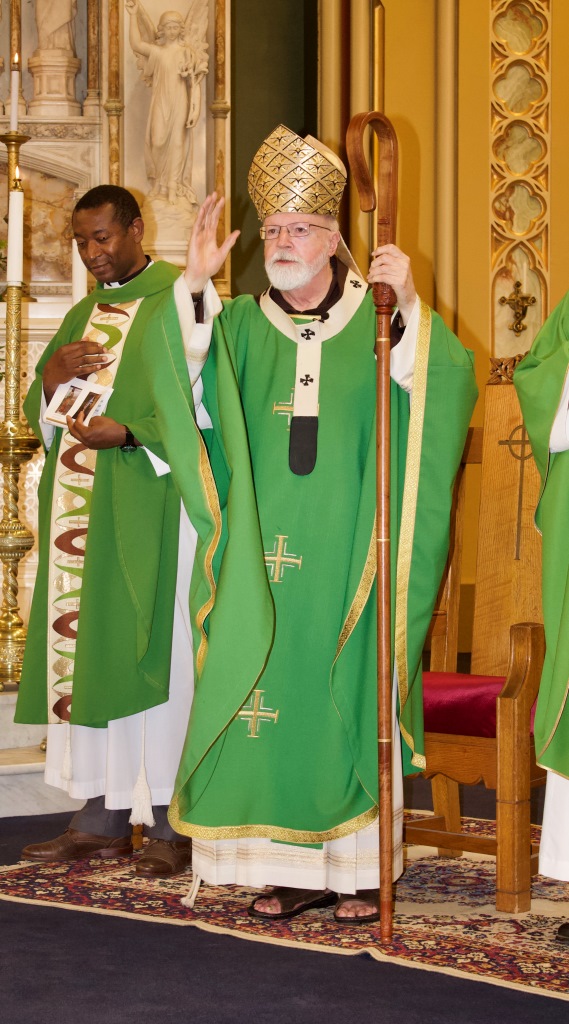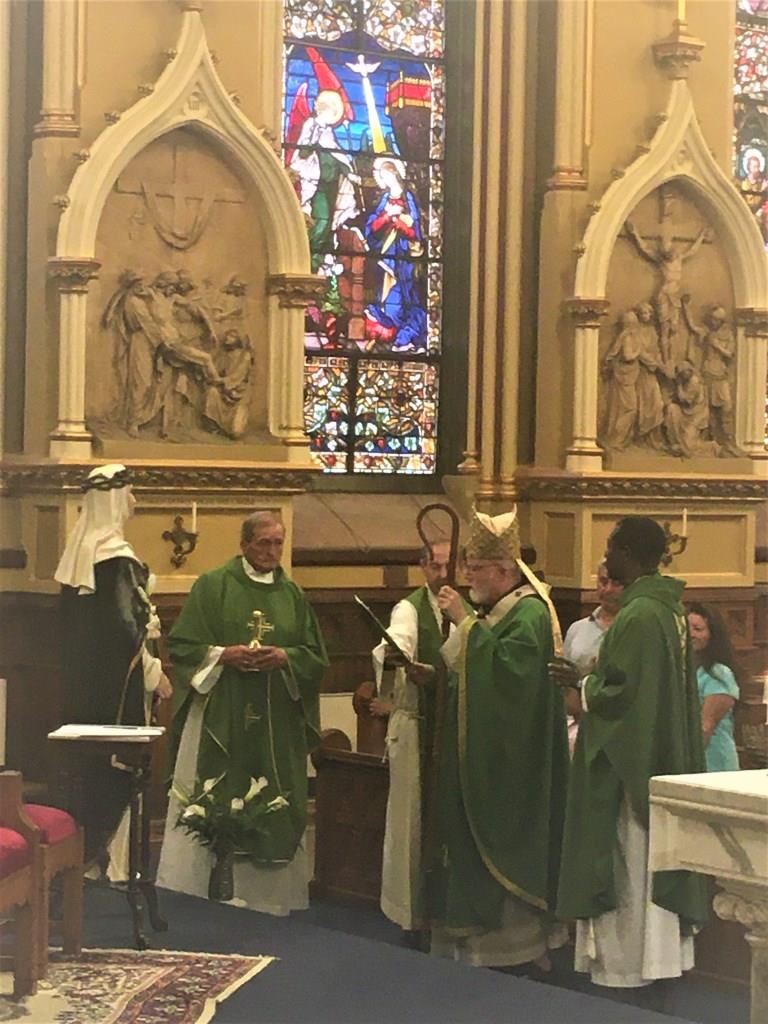Newsletter, June 25, 2021
Dear Friends,
The following comments were in the lovely Mass program for the visit of Cardinal Seάn on Saturday, June 19. The Cardinal came to celebrate the conclusion of the campaign for the restoration and painting of Saint Mary’s Church and celebrate Mass with us. Following the Mass, we enjoyed a simple reception outside. It was a wonderful event – enjoyed by all!
“Saint Mary’s Church is a jewel of the Archdiocese!” This is how Cardinal Seάn described St. Mary’s Church when he asked me to come to Charlestown to become the pastor of St. Mary’s Parish in 2004. Who could have ever imagined all that would happen more than 16 years later?
The pandemic has changed the world and countless factors have contributed to many changing realities in the Church and especially here in Charlestown. Nonetheless, this is a deliberately welcoming faith community of men and women, newly arrived and longtime residents, diverse in every way. With all of the changes across this urban landscape, the one of which we are most rightfully proud is our unity as people of faith expressing itself in our support for those in need, our love for this magnificent parish church, and our active participation in the practice of our faith.
Carrying out the restoration of St. Mary’s has been a work of immense dedication on the part of so many. The enthusiasm of the community and the hard work and sacrifice of parishioners and staff made possible this achievement. Of course, this effort was all the more challenging in the light of COVID 19. Consequently, bringing the project to conclusion is all the sweeter!
There are no adequate ways to express gratitude to the many participants and supporters of this project. The skilled artisanship of the team from John Canning Company working with our consultant from Building Restoration Associates and the dedicated team of parishioners were principals in carrying out the work. The skilled professionals from the Inspiring Hope team of the Archdiocese guided us through the campaigns necessary to raise the funds to carry out the work.
For all of these and, of course, to God through whom all things are possible, I am deeply grateful. And I believe generations to come will marvel at the fruits of this work as they enter this holy place, now more than ever, a sparkling jewel of the Archdiocese of Boston.
Father Ronan
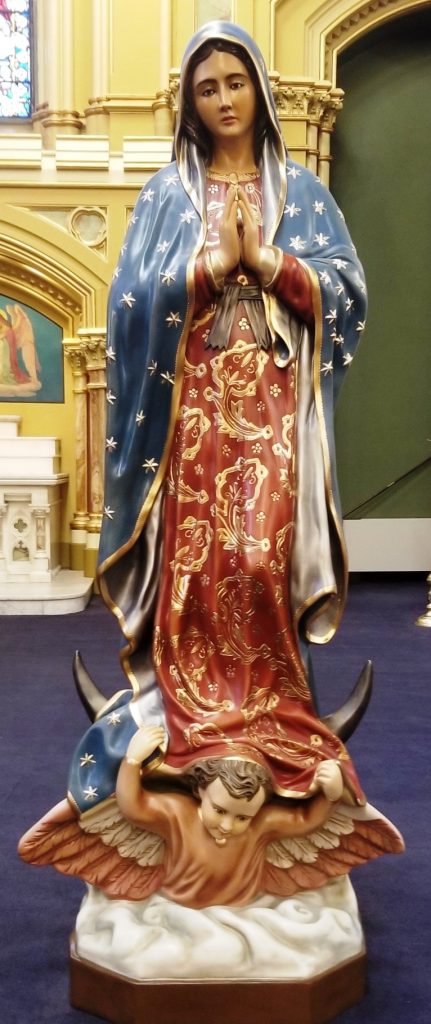
OUR LADY OF GUADALUPE, PATRONNESS OF THE AMERICAS
PART TWO
THE FAMOUS IMAGE IS STEEPED IN SPIRITUAL SYMBOLS.
When the Blessed Virgin Mary appeared to Juan Diego and imprinted her image on his tilma, a cactus-fiber mantle, she did so recognizing the local beliefs of the Aztec people. This led to an image of Our Lady that is full of symbols that were meant to teach the Aztec people who she was and highlight her closeness to the local population.
Face and Hair – Instead of the typical “white” Madonna, Our Lady of Guadalupe appears with the complexion of the indigenous people. More specifically she is a mestizo, a combination of Mexican and Spanish, indicating that she is for all people. Her eyesre cast downwards, indicating to them that she was not a god and symbolizing humility. The gaze is also one of compassion and motherly tenderness. Her hair is loose, indicating that she was a virgin maiden.
Mantle and Tunic – The lady wears a rose-tinted tunic with four-petaled flowers imprinted on it, symbolizing the earth and the four seasons. The rose color may point to the dawn, symbolizing a new era. Around her mantle is a bluish-turquoise cloak with stars upon it. This is the color of both royalty and the heavens above. She may not be a god, but she is certainly from heaven.
Ribbon – The black ribbon around her belly indicates that she is with child. Some believe that her appearance gives evidence that she is about to give birth.
Hands – She is pictured in prayer, showing again that she is not a god, but praying to someone else who is. Her knee is slightly bent which could indicate a prayerful dance.
Medallion – A circle medallion is around her neck that is engraved with a cross. This symbolized her consecration to Jesus Christ.
Sun – Behind the lady are the rays of a sun. This meant she was greater than their Aztec sun god.
Moon – Similarly, she stands upon the moon, showing her superiority to the Aztec moon god and that she is greater than the night.
Angel – It was believed that angels took the Aztecs’ sacrifices to their gods. In this case, the lady is the sacrifice given and stands as the perfection of all sacrifices. Also, only royalty were lifted on shoulders, so it again points to her place in the heavenly court. The angel also has wings that are similar to an eagle’s wings in Aztec iconography.
All of this symbolism has an added dimension when viewed in light of Scripture. She is clearly the woman from the book of Revelation.
And a great portent appeared in heaven, a woman clothed with the sun, with the moon under her feet, and on her head a crown of twelve stars; she was with child and she cried out in her pangs of birth, in anguish for delivery. (Revelation 12:1-2)
Later on in that chapter it even reads, “But the woman was given the two wings of the great eagle that she might fly from the serpent into the wilderness” (Revelation 12:14). For the people of Mexico, this image was ground-breaking in symbolism and spoke directly to their culture while teaching them multiple Christian truths.
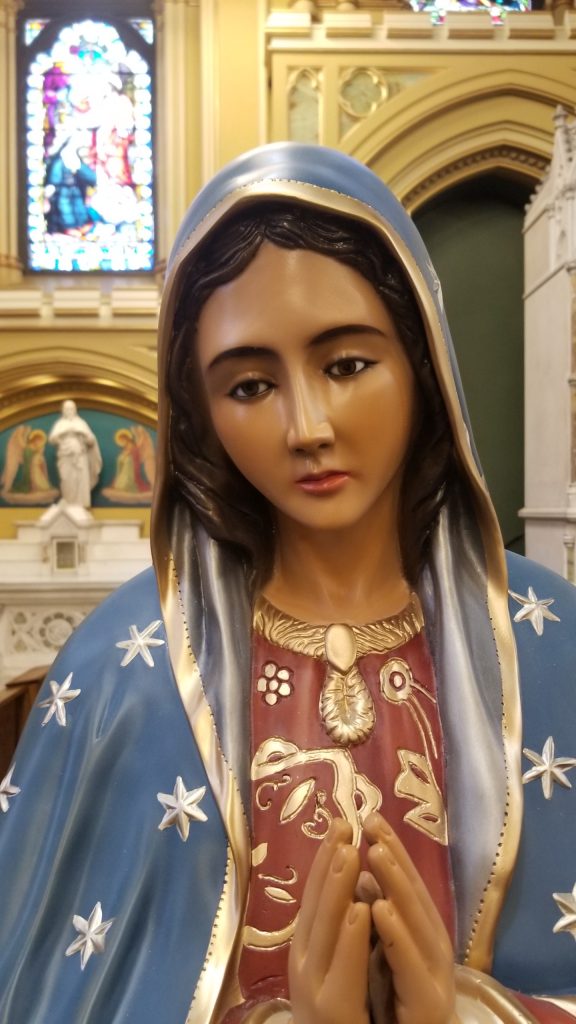
A GAZE FROM HEAVEN THAT CHANGED THE HISTORY OF A CONTINENT
The eyes of the image of Our Lady of Guadalupe are one of the great enigmas of science, according to a Peruvian engineer José Tonsmann, who has extensively studied this “mystery.”
This graduate of Cornell University has spent more than 20 years examining the image of the Virgin printed on the coarse and fibrous tilma worn by Saint Juan Diego, who received the apparitions that would decisively change the history of the continent.
The eyes of the image are especially mysterious. Although their dimensions are microscopic, the iris and the pupils present the highly detailed images of 13 people. The same people are present in the left eye and the right, with different ratios, just as images are transmitted by human eyes.
The reflection transmitted through the eyes of the Virgin of Guadalupe is thought to be the scene in which Juan Diego brought the flowers given him by Our Lady as a sign to Bishop Fray Juan de Zumarraga, on December 9, 1531.
Tonsmann studied the images of Our Lady’s eyes using his experience from analyzing microscopic and satellite photographs, skills from his background while at IBM.
Tonsmann began to develop his study of the eyes in 1979. He widened the iris in the eyes of the Virgin to a scale some 2,000 times the actual size and, through mathematical and optical procedures, was able to make out the characters printed in the eyes of the Virgin. According to Tonsmann’s findings, in the image of Guadalupe, we have something “that has not been painted by human hand.”
Photos from Cardinal Sean’s Mass, blessing of the statues and the reception afterwards
On Saturday June 19, Cardinal Sean blessed the statues of Our Lady and Saint Catherine, and celebrated with us, the painting of our beautiful Church. Thank you to all that have donated to this project. Please click here to check out the history of how we got here.
